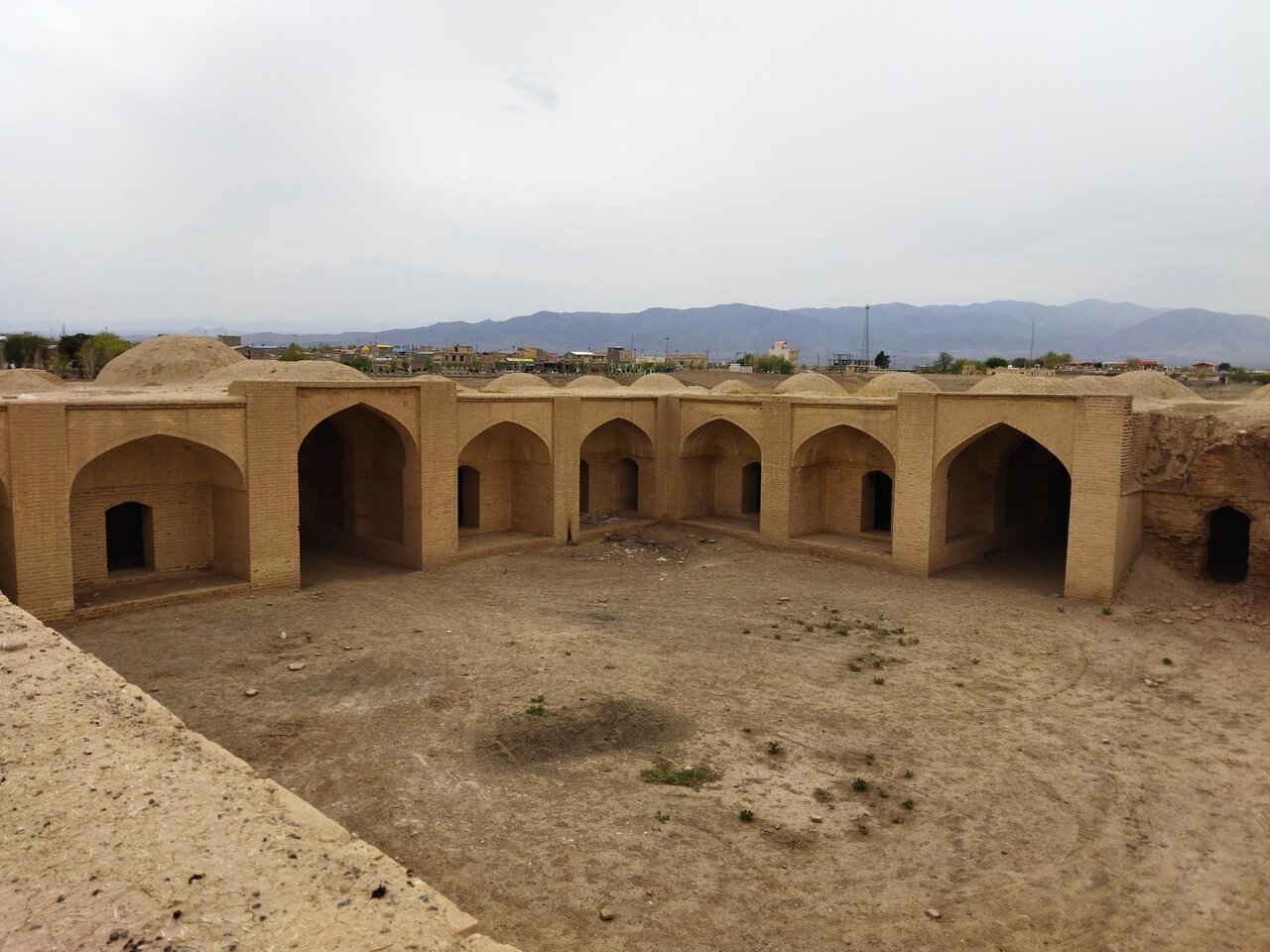Restoration of 17th-century Aveh caravanserai enters 3rd phase

TEHRAN - The third phase of the comprehensive restoration of the historical Aveh Caravanserai has commenced, according to the deputy tourism chief of Markazi province.
This 17th-century huge inn, located in Saveh County, has been undergoing restoration to preserve its historical and architectural significance, Hossein Mahmoudi said on Thursday.
“Considering the annual allocation of funds for the restoration of this historical caravanserai, 13 billion rials (some $22,000) will be spent on this restoration project this year,” the official stated.
The previous year saw the completion of the first and second phases, which included reinforcing the foundations and brick columns, as well as repairing damaged arches and vaults, the official explained.
Moreover, Mahmoudi provided details on the current phase, stating, "This stage focuses on restoring the remaining parts of the arches and walls that still require attention. Following this, we will repoint the masonry joints and replace the deteriorated bricks in various sections."
Mahmoudi emphasized that the final phase, contingent upon securing the necessary funding, will involve landscaping and paving the caravanserai's grounds, ultimately leading to its full operational restoration.
The Safavid monument enjoys a symmetrical plan of four iwans, representing the classic form of a caravanserai. It consists of various sections, including the central courtyard, entrance, iwans, chambers, and stables.
For long, Iranian caravanserais have been a testimony to the rich circuits of traveling and trade in ancient Iran, providing shelter, food, and water for caravans, pilgrims, and other trekkers.
Caravanserai, derived from the compound of "caravan" and "Sara," symbolized a haven for groups of travelers. These structures typically boasted massive portals supported by sturdy walls, with guest rooms encircling a central courtyard and stables tucked behind them, often accessible through yard corners. The earliest caravanserais in Iran trace back to the Achaemenid era (c. 550 - 330 BC).
Last year, a selection of 54 centuries-old roadside inns won a UNESCO label under the name: The Persian Caravanserai. The registration was made at the 45th session of the UNESCO World Heritage Committee in Saudi Arabia’s capital Riyadh, after carefully examining the proposed caravanserais located in 24 provinces across the country.
AM
